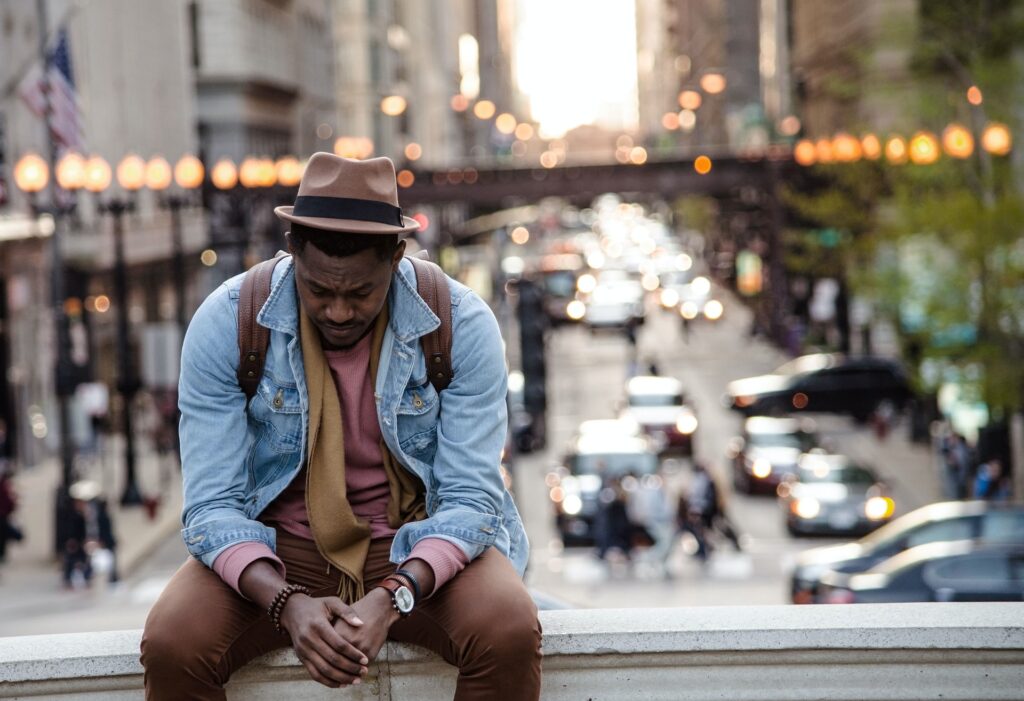Source: Photo by whoislimos on Unsplash
Grief can feel like such a weighty word and heavy concept. Simultaneously, living through a time in which we have all lost so much, grief can also feel like an impossibly small word that cannot begin to describe how we feel about the experiences we have suffered.
Burnout, isolation, anger, and a myriad of compounding factors are making it harder than ever to feel our way through these grieving experiences. If there is one tenet I stand by as a therapist, it is that if we cannot feel, we cannot heal. It is also asking so much of us to expect to be able to do this work alone without our regular communities as accessible as they once were. In our darkest times, we need to remember that while our pain is unique, it is also universal. As Tom Zuba says in his book “Permission to Mourn,” “When it takes everything out of you just to breathe. When you wonder if another breath is even possible. When you feel yourself slipping away into the darkness. You are not alone.” So, how do we stay present, allow ourselves to mourn, and find solace when the idea of “community” is a shifting landscape?
First, it is important to name the experience. There are many types of loss that extend beyond the death of a loved one. We can feel the loss of experiences, opportunities, imagined futures, and relationships that have ended for reasons other than death. On the website What’s Your Grief, Eleanor Haley describes multiple types of grief including (but not limited to) complicated grief, disenfranchised grief, traumatic grief, collective grief, and ambiguous grief.
Complicated grief is an umbrella term that can encompass all of these experiences. Disenfranchised grief highlights the cultural biases and societal norms at play that have historically deemed what grief is and who is allowed to feel it. The crucial experience of mourning has often been stripped from groups and people who are not white, hetero, and cis-gendered. For example, the losses that so many have suffered in this pandemic are not recognized in many mainstream places such as the news, employers, and social media. Subsequently, it is difficult to claim this grief and mourn. At the beginning of the pandemic, I heard the phrase “We might all be in the same storm, but we are not in the same boat.” If you are shipwrecked but no one acknowledges that you are drowning, how do you begin to grieve the losses that you have incurred?
Two years ago, it might have felt like we were all experiencing a collective and traumatic series of losses. As painful as it was, there was some solace in that. Now, it might feel so much more ambiguous given how differently we have all been affected and seem to be coping. So, after we take the important step of naming the experience, we have to find spaces and places to grieve. Therapy is one place this can be done. The safety of your therapeutic relationship can offer connection, privacy, and time to mourn the people, places, and things you have lost. Online support communities exist too and you might find more solace in finding groups that are experiencing a similar loss to your own. Organizations like Grief Share and SAMHSA provide help in connecting people to support groups. Books, including Tom Zuba’s previously mentioned book “Permission to Mourn,” “Ambiguous Loss: Learning to Live with Unresolved Grief” by Pauline Boss, and “It’s Your Loss,” by Emma Hopkinson and Robyn Donaldson, can provide a sense of community and ease the feelings of isolation.
Finally, after we name the experience and find our places to mourn, how do we begin to incorporate our grief into our lives? Lauren Herschel provides an analogy on living with grief using the image of a ball in a box. In this analogy, she describes grief as like a ball in a box, the box representing ourselves. Inside this box, there is a “pain” button. At first, the grief ball is so big, that it constantly presses up against that button and it can feel absolutely debilitating. Over time, she explains that the ball gets smaller and so it presses up against that button less often. It is still there, and it can still stop you in your tracks when it is pressed, but there will be more times that you live without the button being pushed. After doing my own grief and loss work and walking alongside my clients’ in theirs, I have one revision to the analogy. I think that rather than the ball getting smaller, it is the box that gets bigger. Our grief might never shrink, however we expand and grow around it. We create space for it to exist within ourselves in a way that does not define us and is still a part of us.
Wherever you are in your journey, the hope is that you find the name for your experience, the community you feel safe with, and the process to mourn that feels authentic for you. Like many things in life, there is no one right way through this work, it just has to be yours.
References
Blog. What’s your Grief. (n.d.). Retrieved January 29, 2022, from https://whatsyourgrief.com/blog/?category=resources
Herschel, L. (2017, December 29). So grief is like this: There’s a box with a ball in it. And a pain button. And no, I am not known for my art skills. Twitter. Retrieved January 29, 2022, from https://twitter.com/laurenherschel/status/946888282444460033?lang=en
Zuba, T., & Zukav, G. (2015). Permission to mourn: A new way to do grief. Bish Press.


